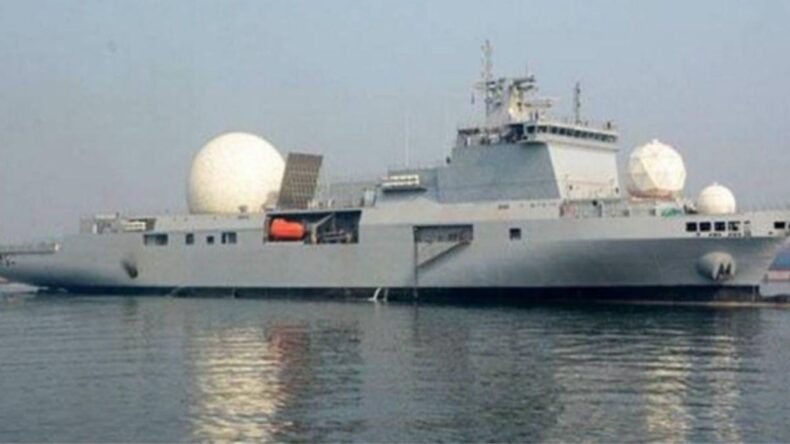On Friday, India launched INS Dhruv, the first nuclear-missile tracking ship capable of tracking nuclear missiles at a long-range.
With this feat, India becomes the only country outside the P5 – the US, the UK, Russia, China and France to possess such high-tech and specialised vessels.
The ship was built by India’s Hindustan Shipyard Limited, the DRDO (Defense Research and Development Organisation), and NTRO (National Technical Research Organisation).
Earlier only known by its code designation VC-11184, it had been under construction since 2014 under a covered drydock in Visakhapatnam, Andhra Pradesh.
INS Dhruv had cleared all tests and trials in 2020 and was ready to join the Indian Navy. However, the coronavirus pandemic had delayed the process.
It was in March 2021 that India set to commission this highly classified project.
This ship is a showcase under the Make in India initiative and cost nearly 725 crores. It measures almost two football fields long, and it is one of the largest warships to be built at an Indian yard.
The ship is equipped with the AESA (state-of-the-art active scanned array radar) that can monitor satellites watching over India and the missile tests in the region.
According to a report by The Hindustan Times, this vessel is capable of providing early warning of attacks from Pakistan and China and thus playing a pivotal role in strengthening the defence capabilities of India.
India faces high hazards due to the nuclear ballistic capabilities of its neighbouring countries – China and Pakistan.
On top of that, the nations are often at odds with each other due to territorial disputes. With its long-distance missile range, INS Dhruv could be instrumental in maintaining India’s presence in the Indo-Pacific region.
The 10,000 tonnes vessel would help in mapping ocean beds for research and detecting enemy submarines.
It would also assist the Indian Navy to gather intelligence about the entire region from the Gulf of Aden to the South China Sea via Malacca, Sunda, Lombok, Ombai, and Wetar straits.
The arrival of this satellite and ballistic missile tracking ship will be helpful to the Indian Navy in strategising its military operations better across all three dimensions of naval warfare – sub-surface, surface, and aerial.













